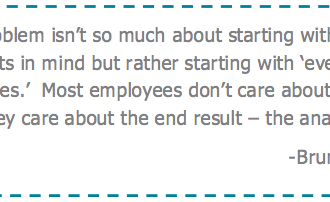I got my first look at JMP recently. JMP originally stood for “John’s Macintosh Project” apparently but is now a major business unit of SAS that has operated independently since 1989. It has about 180 employees and 250,000 users worldwide. The product has long since supported both Windows and Mac platforms and is a full SAS client. Critically JMP is an all in-memory solution for desktops that is highly interactive and highly usable.
I got my first look at JMP recently. JMP originally stood for “John’s Macintosh Project” apparently but is now a major business unit of SAS that has operated independently since 1989. It has about 180 employees and 250,000 users worldwide. The product has long since supported both Windows and Mac platforms and is a full SAS client. Critically JMP is an all in-memory solution for desktops that is highly interactive and highly usable. The JMP family consists of JMP, JMP Pro (a 64 bit version with some more advanced features) plus two joint JMP/SAS products aimed at healthcare – JMP Genomics and JMP Clinical.
JMP is focused on exploratory data analysis and visualization. Recent enhancements in the area of interactive data mining and predictive analytics add more automated predictive analytic model building techniques to its visual discovery. Visualization of data to build understanding is important to all phases of analysis of course– discovery, development and deployment. JMP delivers visualization that is optimized for discovery. As an in-memory product it is very responsive and limited only to the amount of memory you have on the desktop. It is extensible with visual, coding and wizard-driven options and comes pre-integrated with SAS, Excel and R.
JMP Pro is a64 bit extended version of JMP with enhanced neural net, decision trees and modeling platforms along with more advanced methods and an ability to generate SAS score code. JMP Pro is now shipping with SAS Enterprise Miner (reviewed here) and is apparently going to be the basis for a new SAS Enterprise Miner interface. This, SAS hopes, will help create more analytic bandwidth by making modelers more productive and more able to do new exploration during the development of their models – taking advantage of their local compute power with JMP Pro’s in-memory architecture..
The interactive environment links all the data being analyzed together – highlight one area of a graph, for instance, and the data in other graphs based on the same data set are colorized to show the selected records. For instance, in a set of distribution graphs you can see how each variable is distributed for a particular subset of the data selected in one of them. You can graph data simply by dragging and dropping data into graph frames and everything updates more or less immediately as you move things around. While this lends itself to rapid exploration you can also record scripts as you interact with the data and save them to allow you or someone else to recreate the same views later.
Data mining capabilities in JMP Pro include things like decision trees. The JMP Pro interface let’s you easily select how to hold back validation data or select training data and reuse these settings for multiple modeling exercises. Decision tree building, for instance, is highly interactive allowing a user to add manual splits as well as allowing the algorithm to build the tree. Each technique has its own set of supporting visualization techniques. For instance, in neural networks, lots of nice graphs show the various ways in which different elements contribute to the neural network.
Once built, any model building script can be saved (as a JMP script or as SAS code) or the predictions for each record can be written back. Multiple models can be added to a dataset and then profiled to visualize how the models are similar or different in terms of their predictions. For instance the different ways a neural network and a decision tree use variables can be clearly seen and investigated in a variety of different ways.
JMP Pro has a lot of other features and some highlights include the ability to create data movies and generate flash for them, strong support for design of experiments, reliability and survivability analysis and a journal feature that lets you track all the elements of a project and package them up. The product is clearly aimed at someone who has a stats background or who is interested in learning about statistics.
JMP Pro can be used with SAS Enterprise Miner for interactive discovery and pattern detection, preliminary variable selection, challenger model development and model assessment. Today the products can be used alongside each other and the JMP scripting language is used to call procedures in Enterprise Miner but JMP Pro nodes for SAS Enterprise Miner modeling flows are also coming along with tighter integration.







